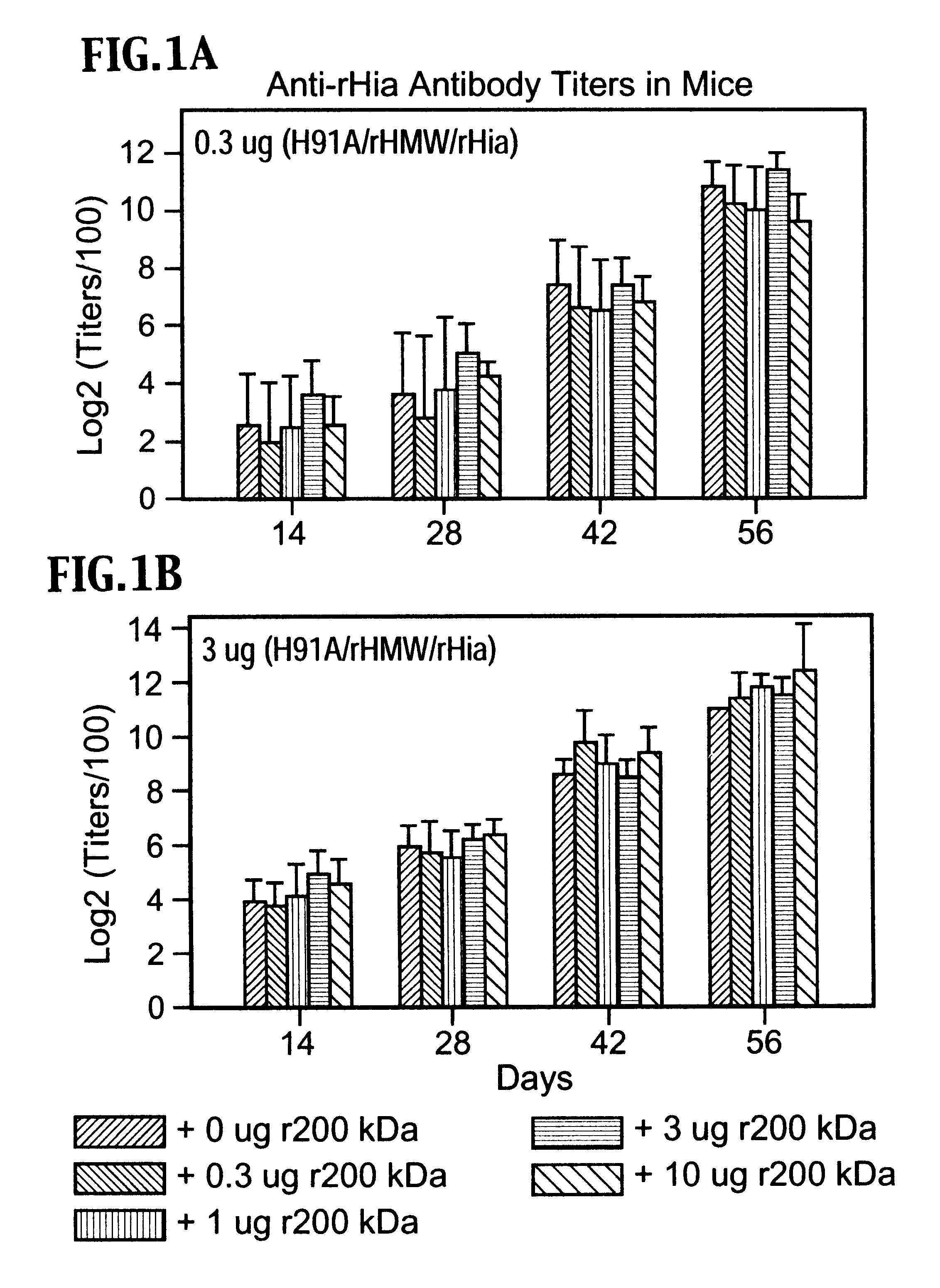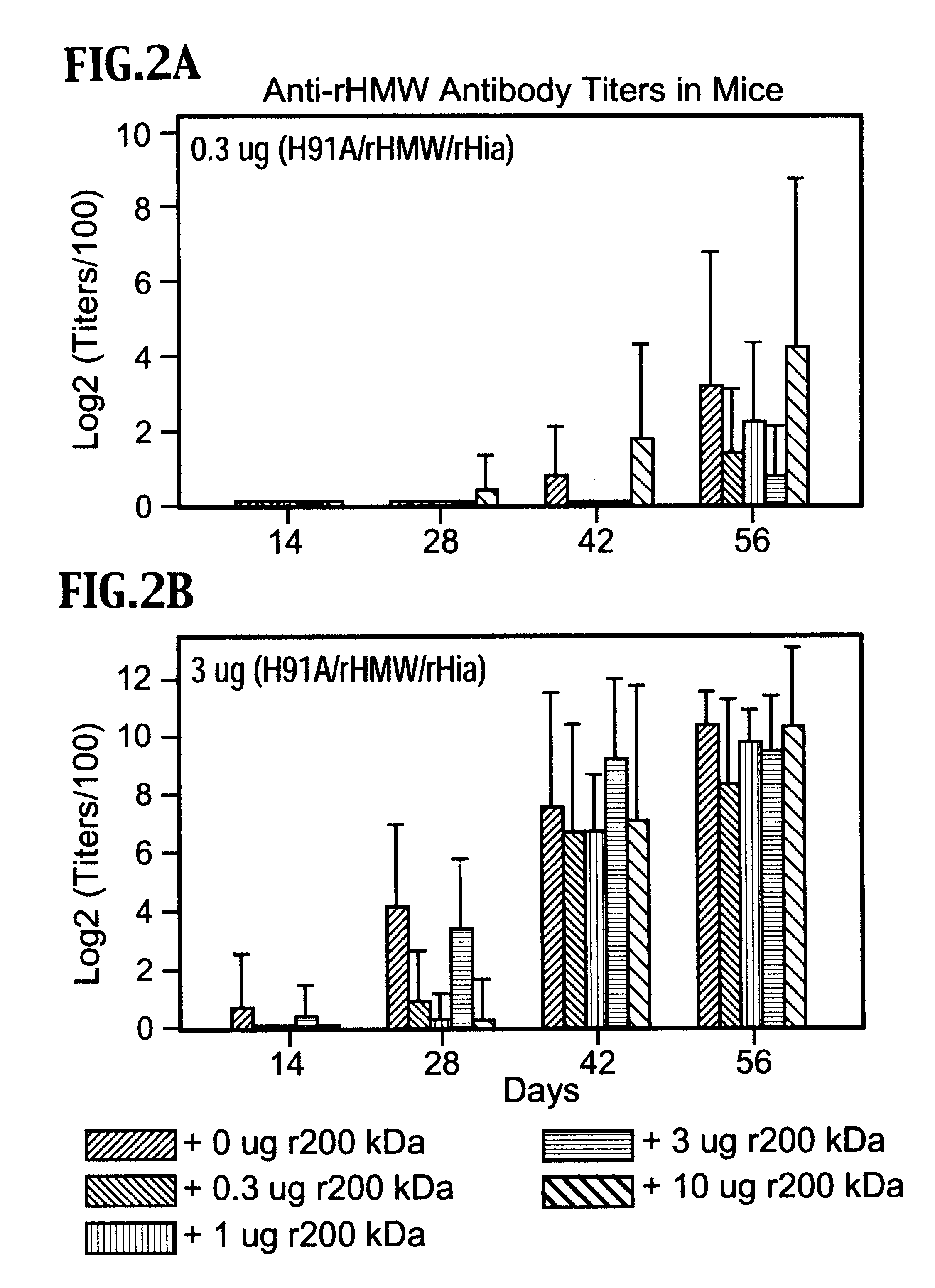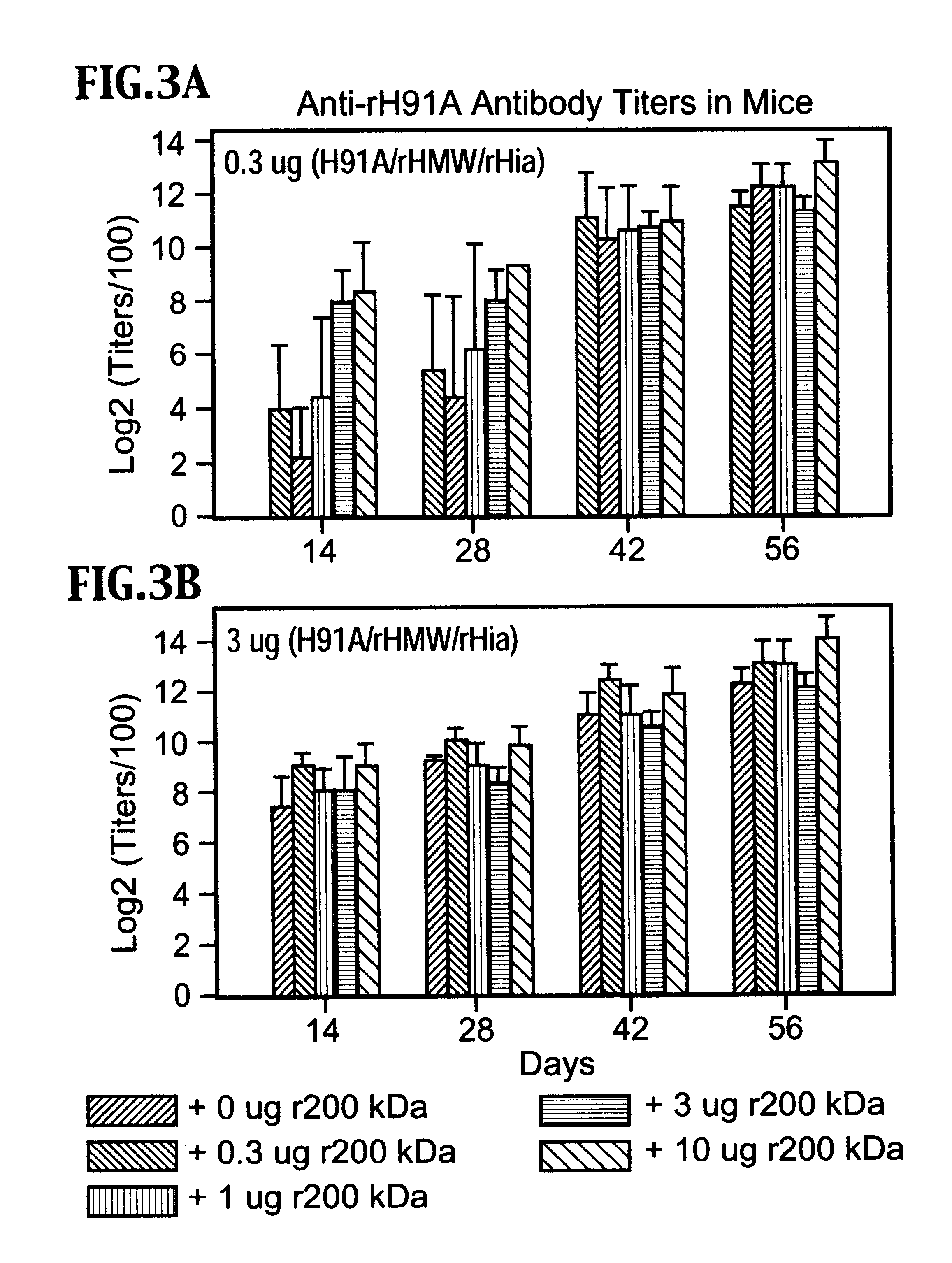Multi-component vaccine to protect against disease caused by Haemophilus influenzae and Moraxella catarrhalis
a multi-component, vaccine technology, applied in the direction of carrier-bound antigen/hapten ingredients, bacterial antigen ingredients, peptide preparation methods, etc., can solve the problems of insufficient strain-wide protection, insufficient proteolytic activity, and inability to fully protect against strain-wide infection, so as to increase the primary anti-h91a hin47 response and reduce the immune response to r200 kda
- Summary
- Abstract
- Description
- Claims
- Application Information
AI Technical Summary
Benefits of technology
Problems solved by technology
Method used
Image
Examples
example 1
This Example describes the preparation of the H91A Hin47 vaccine component.
The H91A Hin47 mutant was prepared as described in the aforementioned U.S. Pat. No. 5,506,139. Briefly, an oligonucleotide 5' ATCAATAACAGCATTATTGGT 3' (SEQ ID NO: 1) was synthesized which would change the Histidine residue at 91 to an Alanine (ref. 17).
Plasmid JB-1276-1-2 is a pUC-based plasmid containing the T7 / hin47 gene on an EcoR I fragment and was used to clone the hin47 gene into M13mp18 for site-directed mutagenesis with the In Vitro Site-Directed Mutagenesis kit from Amersham. The preparation of plasmid JB-1276-1-2 is described in U.S. Pat. No. 5,506,139. The mutation of the His91 codon to Ala91 was confirmed by local sequencing. The H91A mutant hin47 gene was subcloned into pT7-7 to generate plasmid DS-1277-19 (FIG. 11).
The H91A Hin47 expression plasmid (DS-1277-19) utilizes ampicillin selection. The T7 / H91A hin47 gene was cloned into pBR328 so that tetracycline selection could be used. Vector DS-131...
example 2
This Example describes the preparation of the rHMW vaccine component.
The production and purification of the rHMW protein has been described in the aforementioned copending U.S. patent application Ser. No. 09 / 167,568 filed Oct. 7, 1998.
Briefly, plasmid pHMW1-15 (ref. 13) contains a Xba I site within the T7 promoter sequence and a unique BamH I site within the coding sequence of the mature HMW1A protein of non-typeable Haemophilus strain 12. The 1.8 kb Xba I-BamH I fragment of pHMW1-15 was deleted and replaced by an approximately 114 bp Xba I-BamH I fragment generated from oligonucleotides. The resultant 11.3 kb plasmid, DS-1046-1-1, thus contains the T7 promoter joined in frame with the hmw1ABC operon that encodes the mature 125 kDa HMW1A protein (FIG. 12).
Plasmid DS-1046-1-1 contains the T7 hmw1ABC gene cassette and has a unique Bgl II site outside the coding region of the mature HMW1A gene. Plasmid DS-2224-1-4 contains the E. coli cer gene located on a BamH I fragment. This fragmen...
example 3
This Example illustrates the preparation of the rHia vaccine component.
The production and purification of the rHia protein has been described in the aforementioned copending U.S. patent application Ser. No. 09 / 268,347.
Briefly, plasmid DS-1843-2 is a pBR328-based plasmid in which a multiple cloning site and two transcription terminators have been introduced on oligonucleotides, between the EcoR I and Pst I sites, thus destroying both the chloramphenicol and ampicillin resistance genes (FIG. 6B). The kanamycin resistance gene from pUC-4K was inserted at the Sal I site, to generate plasmids DS-2147-1 that is kanamycin resistant and tetracycline sensitive. Plasmid DS-2224-1-4 is a pUC plasmid containing a synthetic E. coli cer gene (ref. 15) constructed from oligonucleotides and flanked by BamH I sites. The 290 bp BamH I fragment of the cer gene was inserted into the BamH I site of DS-2147-1 creating plasmid BK-2-1-2. This pBR-based plasmid thus contains a multiple cloning site, the kan...
PUM
| Property | Measurement | Unit |
|---|---|---|
| Fraction | aaaaa | aaaaa |
| Mass | aaaaa | aaaaa |
| Atomic weight | aaaaa | aaaaa |
Abstract
Description
Claims
Application Information
 Login to View More
Login to View More - R&D
- Intellectual Property
- Life Sciences
- Materials
- Tech Scout
- Unparalleled Data Quality
- Higher Quality Content
- 60% Fewer Hallucinations
Browse by: Latest US Patents, China's latest patents, Technical Efficacy Thesaurus, Application Domain, Technology Topic, Popular Technical Reports.
© 2025 PatSnap. All rights reserved.Legal|Privacy policy|Modern Slavery Act Transparency Statement|Sitemap|About US| Contact US: help@patsnap.com



